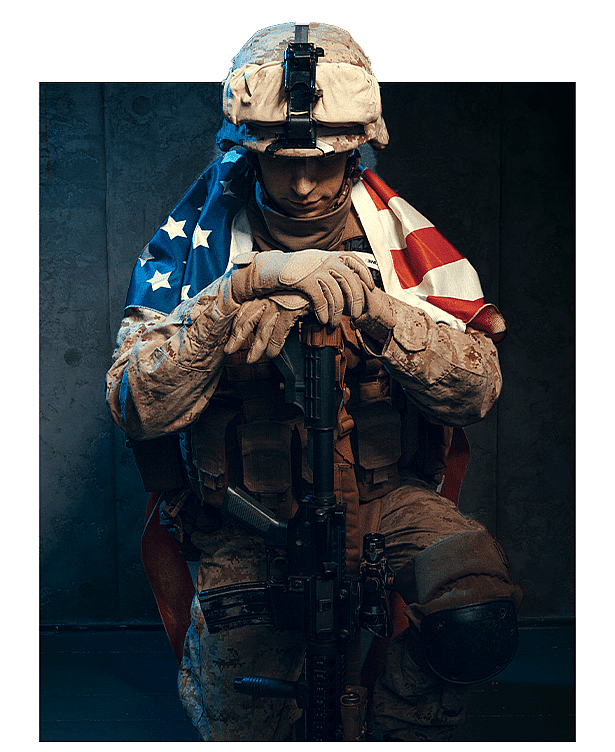Military Rule of Evidence MRE413
The Impact of MRE 413 on the Accused and the Struggle for a Cohesive Set of Standards: What’s Not Similar?
On September 20, 1994, during the 20-minutes of floor debate that Congress gave federal rules of evidence 413 and 414, Senator Bob Dole declared that the presumption of evidence of similar crimes in sexual assault cases “is typically relevant and probative, and that its probative value is not outweighed by any risk of prejudice.” With one fell swoop, Congress passed Fed. R. Evid. 413 (FRE 413) and dismissed at least 300 years of wisdom in the law of character evidence while by-passing the Rules Enabling Act – an act that was designed to ensure the passage of evidentiary rules that improve the fairness and efficiency of trials.
In 1994, an election year, Republicans pressured rules FRE 413 and 414 into the Crime Control Act with the threat of blocking its passage. The courts were then saddled with the task of applying the new evidentiary rules without compromising a defendant’s Constitutional rights to due process.Twelve years later, we now have a substantial body of case law to analyze how the Courts have interpreted 413 and their struggle to develop a set of standards that are capable of implementing the legislative intent while ensuring fair trial results.
This article will address Military Rule of Evidence 413 (MRE 413) and its impact on the accused. At this point, it should already be clear that I am opposed to the rule – particularly when applied within the context of the military justice system. I will try and fairly present the arguments for the rule.
Where applicable, I will address the federal rules and case law because the military system has tended to adopt the majority’s reasoning from the various appellate circuits. Also where applicable, I will discuss state law and the development of the lustful disposition doctrine.
Ultimately, I recommend that the Courts define the “similar” language used in the statute as requiring the alleged conduct to include both factual similarities and a shared mens rea or intent.
This paper is concerned exclusively with MRE 413 and it presumes conduct between adults. I do not address child molestation issues, rape shield laws, or sentencing.
What is MRE 413?
MRE 413 was passed via executive order. The rule allows for the liberal admissibility of similar crimes in sexual assault cases. Specifically, the rule dictates that evidence of the accused’s commission of any offenses of sexual assault is admissible and may be considered for it bearing on any matter to which it is relevant. The rule requires the government to provide the defense at least 5 days notice of their intention to use evidence admissible under this rule. And the notice must include either the statements of witnesses or a summary of the substance of any expected testimony.
Generally, an offense of sexual assault means an offense punishable under the Uniform Code of Military Justice, or a crime under federal or state law. Of course, sexual offenses punishable under the UCMJ include rape, sodomy, and indecent assault.
The rule is admittedly specific regarding what types of contact qualify. Of course, all types of contact must occur without the consent of the victim. The accused must make contact between any part of his body or an object he controls and the genitals or anus of another person. The rule also includes any conduct that is intended to derive sexual pleasure or gratification from the infliction of death, bodily injury, or physical pain on another person.
Most problematically, the rule includes attempts or conspiracies to engage in the previously listed conduct. The rule, however, is silent on the standard of proof required for the specific intent element for an attempt. I’ll address this issue later in the paper. The rule continues to define what constitutes a sexual act.
The Unique Setting of its Application in the Military System
At this point, it’s important to note the distinctions between the civilian society that FRE 413 was written for and the military society for which it was adopted. The military environment is dramatically different from the civilian setting in which FRE 413 was passed. Military citizens are self-selected by an all-volunteer military. They undergo a rigorous screening process that eliminates recruits with serious criminal backgrounds. Each recruit undergoes a training process designed to imbue them with discipline. The distinctions are important because one of 413’s underlying assumptions is that a high percentage of sexual offenders are predisposed to recidivism. Yet, the process of military recruitment could weed out a high degree of that population of repeat offenders.
Background and Legislative History
The best place to begin a discussion about MRE 413 is with the background from which the rule was passed. FRE 413 was enacted by Congress on 13 September 1994 in the Violent Crime Control and Law Enforcement Act. The military version was adopted in MRE 1102 for court-martial use on 6 January 1996 and the 1998 amendment to the Manual for Courts-Martial included MRE 413 in its current form.
The rule was intended to provide for the more liberal admissibility of character evidence in criminal cases of sexual assault where there is evidence that the accused committed a prior act of sexual assault. In fact, the rule was specifically intended to create an exception to the FRE 404 (b) prohibition against propensity evidence. The Courts have ensured that FRE 401 relevancy and 403 prejudice safeguards are applicable. But, the defense must preserve those issues. Moreover, the rule includes uncharged conduct.
The rules were proposed by Rep. Susan Molinari and were drafted by attorney David Karp from the Department of Justice. Rep. Molinari had been trying to get a version of the amendment passed since at least 1990. By 1994, she was able to write the amendment into the Crime Control Bill. With her and Sen. Dole threatening to block the bill, they were able to pass it through with only 20-minutes of floor debate.
How Rules are Generally Passed
A review of how rules of evidence are passed is appropriate at this point because Congress completely bypassed the traditional procedure. Generally, the Rules Enabling Act of 1934 delegated almost all rule making authority to the judiciary. Throughout the last 80 years, the Court has evolved a Judicial Conference to monitor and advise on the need for changes or new procedural rules. The Judicial Conference maintains a standing committee on rules of evidence.
The committee adheres to a seven-step process in recommending new rules of evidence:
- Initial consideration by the advisory committee;
- Publication and public comment;
- Consideration of public comment and final approval by the committee;
- Approval by the standing committee;
- Judicial Conference approval;
- Supreme Court approval;
- and Congressional review
This is a critical process that ensures that rules are passed that are both necessary to the administration of justice and tailored produce just results.
Report of the Judicial Conference
The Judicial Conference was highly critical of the new rule and urged Congress to reconsider its decision on the underlying policy questions. The Conference was unanimous in its opposition except for one lone dissenting vote from David Karp in the Department of Justice – he was the rule’s author. The Conference essentially made 5 substantive findings in opposition to the rule:
- 404 (b) already allows for similar evidence;
- The rules are not supported by empirical evidence (probably referring to recidivism);
- There is the danger of convicting a defendant for past conduct or for being a bad person;
- There is the danger of a trial with a trial on the uncharged conduct;
- And, the rule suggests mandatory admissibility and could cause conflict with other rules like hearsay;
Motivations for Passing the Rule
In 1994, the rule’s author, David Karp, spoke at a symposium at the Chicago-Kent College of Law regarding propensity evidence and probability in sex offense cases. He proposed four major reasons why the rule was necessary.
First, he reasoned that “it would be quite a coincidence if a person who just happened to be a chronic rapist was falsely or mistakenly implicated in the later crime of the same type.”Next, he wrote that individuals with a combination of aggressive and sexual impulses have a greater propensity to act on them. Third, he found public interest in admitting this type of evidence because of the gravity of the danger to the public if a rapist or child molester remains at large. Finally, he believed that the evidence will help bolster the credibility of rape victims.
One of the primary justifications for the rule is predicated on the assumption that recidivism rates for sexual offenders are higher than for other crimes. The recidivism rate, however, can vary wildly depending on the study and actuarial methods that are used. Over a long-term analysis of 15-20 years, the recidivism rate typically never exceeds 40%. And somewhat surprisingly, incest offenders have the lowest rates of re-offending.
A study in 1998, reported that only 13 % of their subjects committed a new offense within a 4-5 year follow-up period. Another 1998 study found a recidivism rate of 52% for sexual abusers and 39% for rapists.The same author determined that 26% for rapists and 32% for child molesters is probably a more accurate example.The difficulty in analyzing recidivism rates, however, is in finding an accurate sample. Moreover, some studies use charges as the index of recidivism instead of actual convictions.
Yet, the risk of conviction is exceptionally high. The University of Chicago Jury Project found that jurors became outraged when the heard evidence of sexual misconduct. Juries would frequently convict even when the defendant wasn’t charged with a crime that satisfied legal definitions.









